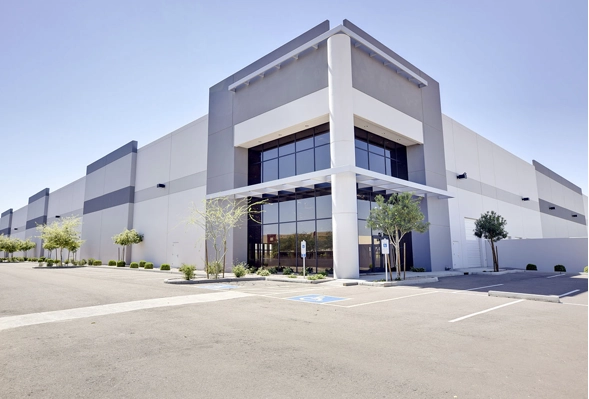
-
 Afrikaans
Afrikaans -
 Albanian
Albanian -
 Amharic
Amharic -
 Arabic
Arabic -
 Armenian
Armenian -
 Azerbaijani
Azerbaijani -
 Basque
Basque -
 Belarusian
Belarusian -
 Bengali
Bengali -
 Bosnian
Bosnian -
 Bulgarian
Bulgarian -
 Catalan
Catalan -
 Cebuano
Cebuano -
 Corsican
Corsican -
 Croatian
Croatian -
 Czech
Czech -
 Danish
Danish -
 Dutch
Dutch -
 English
English -
 Esperanto
Esperanto -
 Estonian
Estonian -
 Finnish
Finnish -
 French
French -
 Frisian
Frisian -
 Galician
Galician -
 Georgian
Georgian -
 German
German -
 Greek
Greek -
 Gujarati
Gujarati -
 Haitian Creole
Haitian Creole -
 hausa
hausa -
 hawaiian
hawaiian -
 Hebrew
Hebrew -
 Hindi
Hindi -
 Miao
Miao -
 Hungarian
Hungarian -
 Icelandic
Icelandic -
 igbo
igbo -
 Indonesian
Indonesian -
 irish
irish -
 Italian
Italian -
 Japanese
Japanese -
 Javanese
Javanese -
 Kannada
Kannada -
 kazakh
kazakh -
 Khmer
Khmer -
 Rwandese
Rwandese -
 Korean
Korean -
 Kurdish
Kurdish -
 Kyrgyz
Kyrgyz -
 Lao
Lao -
 Latin
Latin -
 Latvian
Latvian -
 Lithuanian
Lithuanian -
 Luxembourgish
Luxembourgish -
 Macedonian
Macedonian -
 Malgashi
Malgashi -
 Malay
Malay -
 Malayalam
Malayalam -
 Maltese
Maltese -
 Maori
Maori -
 Marathi
Marathi -
 Mongolian
Mongolian -
 Myanmar
Myanmar -
 Nepali
Nepali -
 Norwegian
Norwegian -
 Norwegian
Norwegian -
 Occitan
Occitan -
 Pashto
Pashto -
 Persian
Persian -
 Polish
Polish -
 Portuguese
Portuguese -
 Punjabi
Punjabi -
 Romanian
Romanian -
 Russian
Russian -
 Samoan
Samoan -
 Scottish Gaelic
Scottish Gaelic -
 Serbian
Serbian -
 Sesotho
Sesotho -
 Shona
Shona -
 Sindhi
Sindhi -
 Sinhala
Sinhala -
 Slovak
Slovak -
 Slovenian
Slovenian -
 Somali
Somali -
 Spanish
Spanish -
 Sundanese
Sundanese -
 Swahili
Swahili -
 Swedish
Swedish -
 Tagalog
Tagalog -
 Tajik
Tajik -
 Tamil
Tamil -
 Tatar
Tatar -
 Telugu
Telugu -
 Thai
Thai -
 Turkish
Turkish -
 Turkmen
Turkmen -
 Ukrainian
Ukrainian -
 Urdu
Urdu -
 Uighur
Uighur -
 Uzbek
Uzbek -
 Vietnamese
Vietnamese -
 Welsh
Welsh -
 Bantu
Bantu -
 Yiddish
Yiddish -
 Yoruba
Yoruba -
 Zulu
Zulu


ታኅሣ . 14, 2024 17:57 Back to list
Push and Pull Rod Mechanisms in Mechanical Systems
The Dynamics of Pull Rods and Push Rods in Mechanical Engineering
In the realm of mechanical engineering, the concepts of pull rods and push rods are pivotal in ensuring the smooth operation of various systems, particularly in automotive and aerospace applications. These rods serve as critical components in transferring forces and motion, enabling complex machinery to function effectively.
Understanding Pull Rods and Push Rods
At their core, pull rods and push rods are types of linkages used to transmit forces in a specific direction. Pull rods are designed to handle tension, meaning they resist forces that attempt to elongate them. In contrast, push rods are engineered to withstand compression, thereby resisting forces that aim to shorten their length. The choice between a pull rod and a push rod often depends on the requirements of the specific application and the direction of the forces at play.
Applications in Automotive Engineering
In automotive systems, pull rods and push rods are extensively employed in the suspension and steering mechanisms. For example, in a vehicle's suspension system, pull rods may be used to connect the chassis to the wheels, allowing for controlled movements as the vehicle traverses uneven terrain. This setup enhances ride comfort and stability by enabling the wheels to move independently, absorbing shocks and vibrations.
Push rods are commonly found in the engine systems of vehicles, particularly in overhead valve (OHV) engines. In these configurations, push rods serve as intermediaries that transfer the upward motion of the camshaft to the cylinder head, opening and closing the engine’s valves. The efficiency of this mechanism is crucial for optimal engine performance, impacting fuel efficiency, power output, and emissions.
Engineering Considerations
pull rod push rod

When designing systems that incorporate pull rods and push rods, engineers must consider several factors, including material selection, size, and load capacity. The materials used must withstand the forces exerted during operation without deforming or failing. Common materials include steel, aluminum, and composites, each selected for their strength-to-weight ratios and durability.
Additionally, the dimensions of the rods play a significant role in their performance. A thicker rod may offer greater strength but could also add unnecessary weight. Conversely, a thinner rod might be more efficient but could risk failure under extreme conditions. Therefore, engineers must strike a balance between robustness and weight to enhance performance while maintaining safety and reliability.
Future Trends
As technology advances, the integration of pull rods and push rods continues to evolve. The rise of electric vehicles (EVs) and hybrid systems necessitates the reevaluation of these components, as new energy sources and drive systems become commonplace. Engineers are now exploring lightweight materials and innovative designs to improve efficiency and integrate these components into more complex systems, such as adaptive suspensions that adjust based on dynamic driving conditions.
The emergence of smart technologies also offers new possibilities for pull and push rod applications. Incorporating sensors and automated systems could allow for real-time monitoring of rod performance, leading to predictive maintenance and enhanced safety features. This shift towards automation and enhanced monitoring is indicative of the future of mechanical engineering, where traditional components like pull and push rods are reimagined to meet modern demands.
Conclusion
Pull rods and push rods are fundamental elements in mechanical systems, playing crucial roles in applications ranging from automotive engineering to aerospace design. Understanding their mechanics and applications is essential for engineers seeking to create efficient, reliable, and innovative designs. As technology progresses, the importance of these components will only grow, driving advancements in engineering practices and redefining their future roles in various industries.
Latest news
What Are Construction Tools and How Are They Used?
NewsJul.11,2025
Professional-Grade Duct Rodding Tools for Superior Cable Installation
NewsJul.11,2025
Enhancing Safety and Efficiency with Modern Hot Stick Solutions
NewsJul.11,2025
Empowering Cable Installation with Advanced Rodder Solutions
NewsJul.11,2025
Elevate Your Cable Installation Projects with Cable Pulling Tools
NewsJul.11,2025
Efficient Cable Handling Solutions: Cable Rollers for Sale
NewsJul.11,2025











